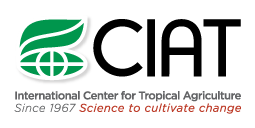CIAT has started the sequencing of the first entire global crop collection and scientists are about a year away from defining cassava’s pan-genome, although there’s still another 5,000 varieties of the 6,643 to complete the picture. Thanks to next-generation sequencing (NGS) the process is faster, cheaper, and more accurate. Once the genome fully decoded, scientists will be able to home-in on the genes responsible for increasing yields, boosting protein content, and improving resistance to pests, and they’ll even be able to breed cassava in silico (on the computer) to establish the most effective combinations of parent plants to produce offspring with the most valuable traits.
Contact: Luis Augusto Becerra

